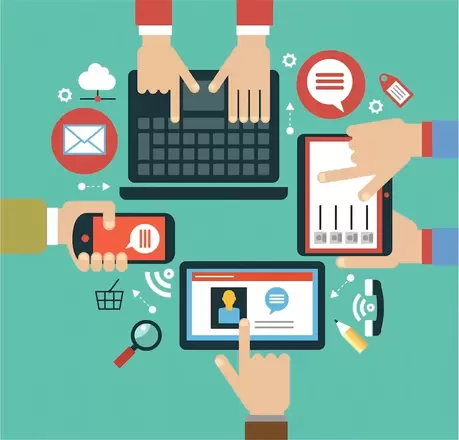How COVID-19 Changed Work, And How You Can Adapt To It In 2023The “Normal” way of working has been drastically redefined during the Covid-19 pandemic. Many people have been laid off from their jobs due to reduced business engagements, and some have found newer ways to do their jobs. However, most people have started feeling more demotivated while working after the pandemic. Over half (55%) of all workers surveyed report feeling less engaged and less productive than they were pre-pandemic. This demotivation of employees leaves a challenge for organizations where they would have to boost the productivity of the employees to get back on track. Luckily, the work environment after the Covid-19 pandemic has been continuously developing and innovating.
Organizations that are not focusing on improving productivity should start implementing digital transformation strategies in order to rethink their longer-term workforce productivity. Although digital transformation is initially a difficult concept to learn and integrate into a company, it is rapidly becoming a necessity in this era of digital work. For example, you will notice restaurants being way more active and having significantly higher customers when they partner with food delivery companies such as GrabFood or Foodpanda. This is because these restaurants have taken a step towards digitalizing and learned to use digital methods to sell their product. Despite the simple example, it clearly illustrates that an organization can improve from even the slightest bit of digitalization. It is about time that more organizations start to think about digital transformation opportunities. Once a company starts to implement digitalization, they will notice an obvious increase in responsibility in the roles of IT teams. This is because some work management platforms may not be the easiest to implement, and may have unclear instructions on how to efficiently operate these platforms. This phenomenon has led many IT professionals to point out how there are certain qualities of collaborative work management platforms that make those platforms better than others. These include not only benefits to the IT teams but also to the employees using them. Technology decision-makers rank three capabilities as becoming more important when it comes to supporting employees working effectively, going forward:
Investing in an organization’s digital transformation, rethinking their longer-term workforce productivity technology strategies, making workforce productivity and collaboration tools a top priority, and finding the right mix of tools to help employees be productive and engaged, including investing in a collaborative work management platform (CWM) is all a part of thriving in this era of digital era of work. To ensure that you have the best Collaborative work management platform, you may have to ask yourself these questions: Is it secure? - Look for a platform with strong central governance and is secure by design to ensure that your data is protected. Will it scale? - Look for a platform that makes it easy to onboard teams and is robust enough to scale to meet the demands of dynamic growth as projects evolve into enterprise-wide initiatives. Will it help the workforce align on strategic goals? - Look for a platform that connects the entire enterprise, providing visibility into the work happening across the organization and aligning teams on strategic goals. Can users quickly build new solutions without help from IT? - Give everyone the power to design a solution that works the way they need it to with an intuitive, no-code platform. Is it adaptable? - Give people a solution flexible enough to adapt to the ever-changing demands of today’s work with a platform that can evolve alongside the nature and scale of any project or initiative. Is it collaborative? - Employees are struggling to collaborate effectively. They’re missing face-to-face conversations, but distracted by too many voice, video, messaging, and email conversations. They’re having trouble understanding the status of the projects and initiatives they’re working on, and not always able to find the information they need. Give them a single platform that connects everyone — wherever they are — and centralizes all the decisions, conversations, files, data, and key information associated with their work, so the information they need to succeed is always at their fingertips. These are a lot of points for somebody to search for when implementing their CWM system, but every single detail matters. Without these key characteristics, it may be difficult to implement the system and later maintain it once implemented. Luckily, there is a platform that can provide companies with a secure and dynamic cloud-based platform for managing collaborative work called Smartsheet. Smartsheet is an enterprise platform built specifically for dynamic work. Smartsheet empowers organizations and teams to dynamically plan, execute, and report on work to move faster, drive innovation, and achieve more. We at 57Network help companies implement Smartsheet into their workforce, as well as help companies develop customized solutions to help their specific business needs. If you want to know how we can optimize your work management, feel free to contact us and we will be happy to help you on your way to your digital transformation journey. ☺ |
|
Care line: +603-9212 0157
|
Leave us your inquiry |
|
This company is registered with the Ministry of Finance, Malaysia.
Equip your organisation with digital solutions & training that inspire innovation and joy at work. Copyright © 2024 57Network Consultancy Sdn. Bhd. Company Registration number : 202001020346 (1376666-K) All rights reserved. |






